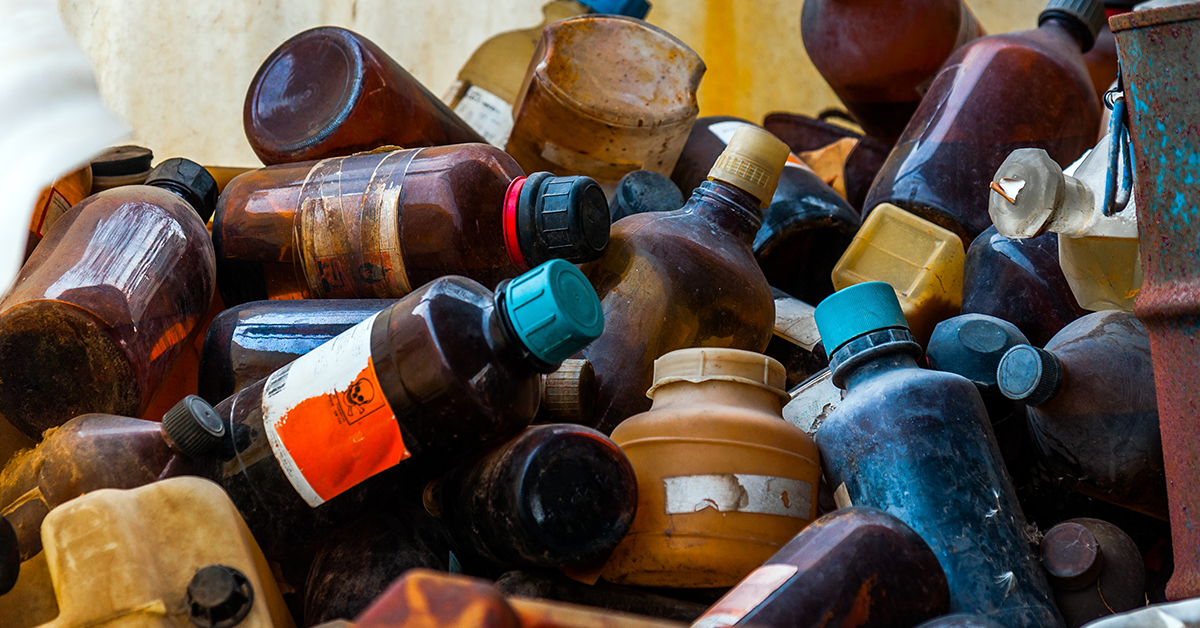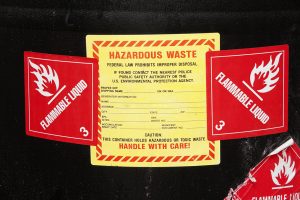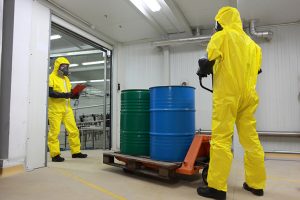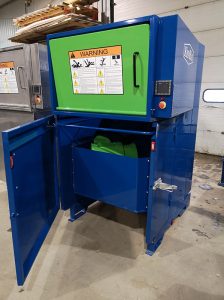
Dealing with hazardous waste disposal can often seem overwhelming.
Not only are there a multitude of hazardous waste disposal rules and regulations to adhere to, but there are also serious consequences associated with any mishap.
The first step in creating a plan to dispose of hazardous waste is to assess your procedures that produce waste and consider how you might diminish their byproducts.
Here are five tips to make sure you’re handling hazardous waste disposal safely and efficiently.
1. Keep waste separate
Keeping waste segregated is vital because it keeps chemical reactions from occurring. Liquid wastes, gasses and solids should all be separate before you dispose of them. Make sure you adhere to government guidelines on how to separate chemicals into their appropriate categories.
You should also have a designated storage area for hazardous waste that only authorized personnel can access. This space should be clearly labeled as a hazardous waste storage area.
 2. Proper labeling
2. Proper labeling
It’s critical that all of your hazardous waste disposal containers are correctly labeled so they can be handled appropriately.
Make sure you’re using official labels from the Environmental Protection Agency (EPA) without abbreviations, and always include the EPA hazardous waste number. Ideally, these labels should also be weather-resistant.
It’s not enough to simply denote the waste category. Failing to use proper labeling can result in leaks, explosions and improper treatment. And that can lead to a greater potential for an unsafe workplace and environmental hazards.
3. Use the right storage materials
Make sure you’re keeping waste in its appropriate storage containers that are compatible with the type of waste being stored and made from materials that can resist corrosion and weather.
When disposing of hazardous liquid waste, make sure you use containers that are tightly sealed with no chance of leaking.
Your facility should have leak management systems to store all of your liquid waste. Always keep track of any liquid that could seep out of your containers or spill when transferring to waste containers.
 4. Conduct weekly inspections
4. Conduct weekly inspections
Having weekly inspections performed by governmental health and safety agencies provide all the resources your company needs for proper hazardous waste disposal.
They will inspect your facility to make sure you’re up to code, and also look for things you might have missed that could endanger your workers or harm the environment. The importance of inspections can’t be overstated.
5. Document whenever possible

Don’t put off documenting your waste management procedures. It might seem like needless extra paperwork, it will be vital if something ever goes wrong. You’ll know how to respond to a crisis and get to the bottom of what’s wrong. The work you do to document your waste management now will help you save money – and potentially save lives – down the road.
It’s also important to know which EPA hazardous waste generator designation applies to your company. Businesses can be large quantity generators, small quantity generators and what’s known as conditionally exempt small quantity generators.
Each designation has its own regulations, with rules becoming stricter with the amount of waste produced. For example, large quantity generators must provide significantly more training for employees on proper hazardous waste management procedures.
If you’re searching for a better way to handle hazardous waste disposal at your facility, turn to KenBay. Our RotoPac HazPac hazardous waste compactor has a small footprint, high compaction, ease of use and its unique ability to compact waste into bulk bags or into hazardous waste boxes makes this hazardous waste compactor ideal for compacting hazardous waste for transporting.
Contact us today to learn more about how KenBay can help your company with its hazardous waste disposal procedures.


